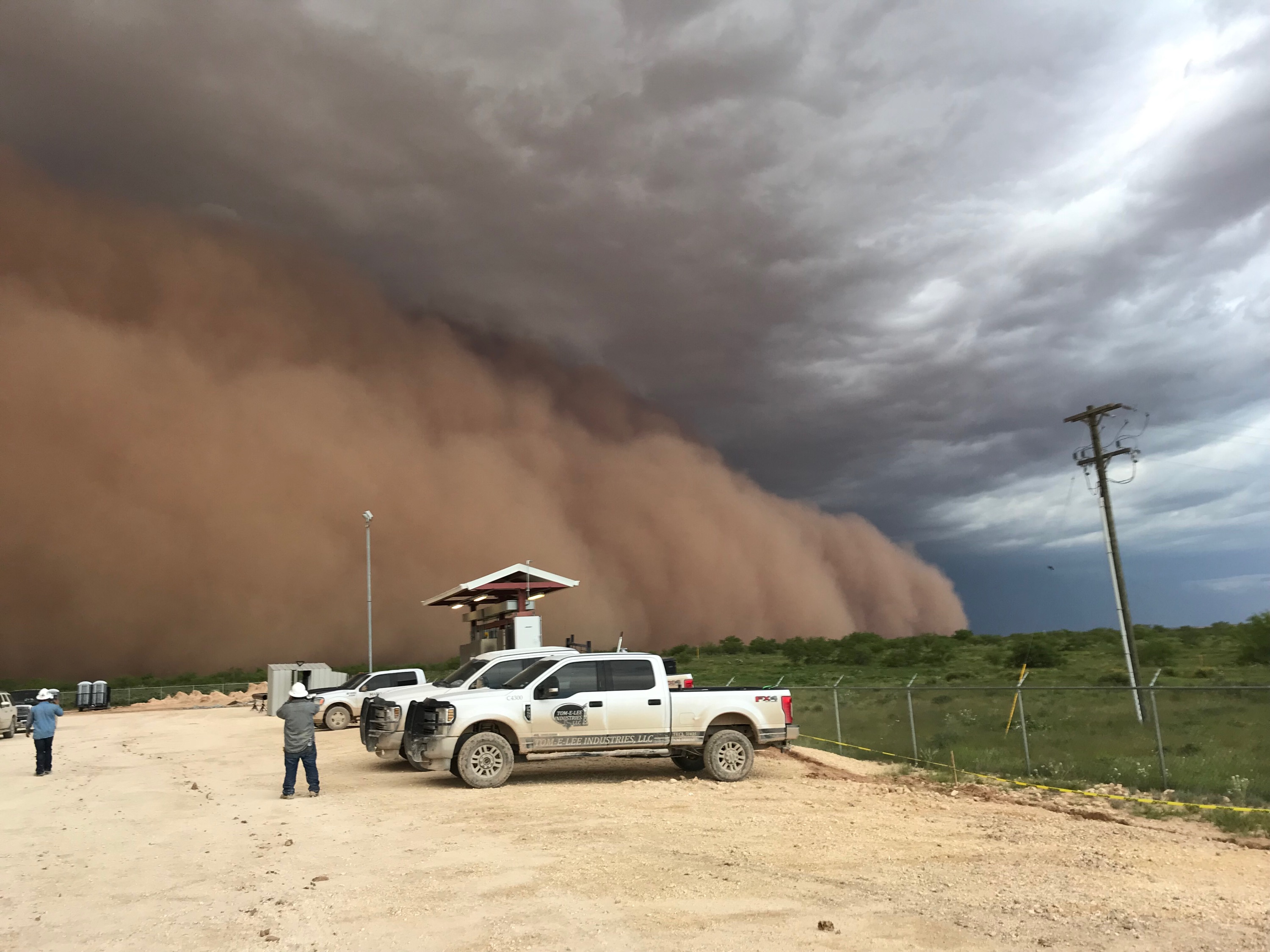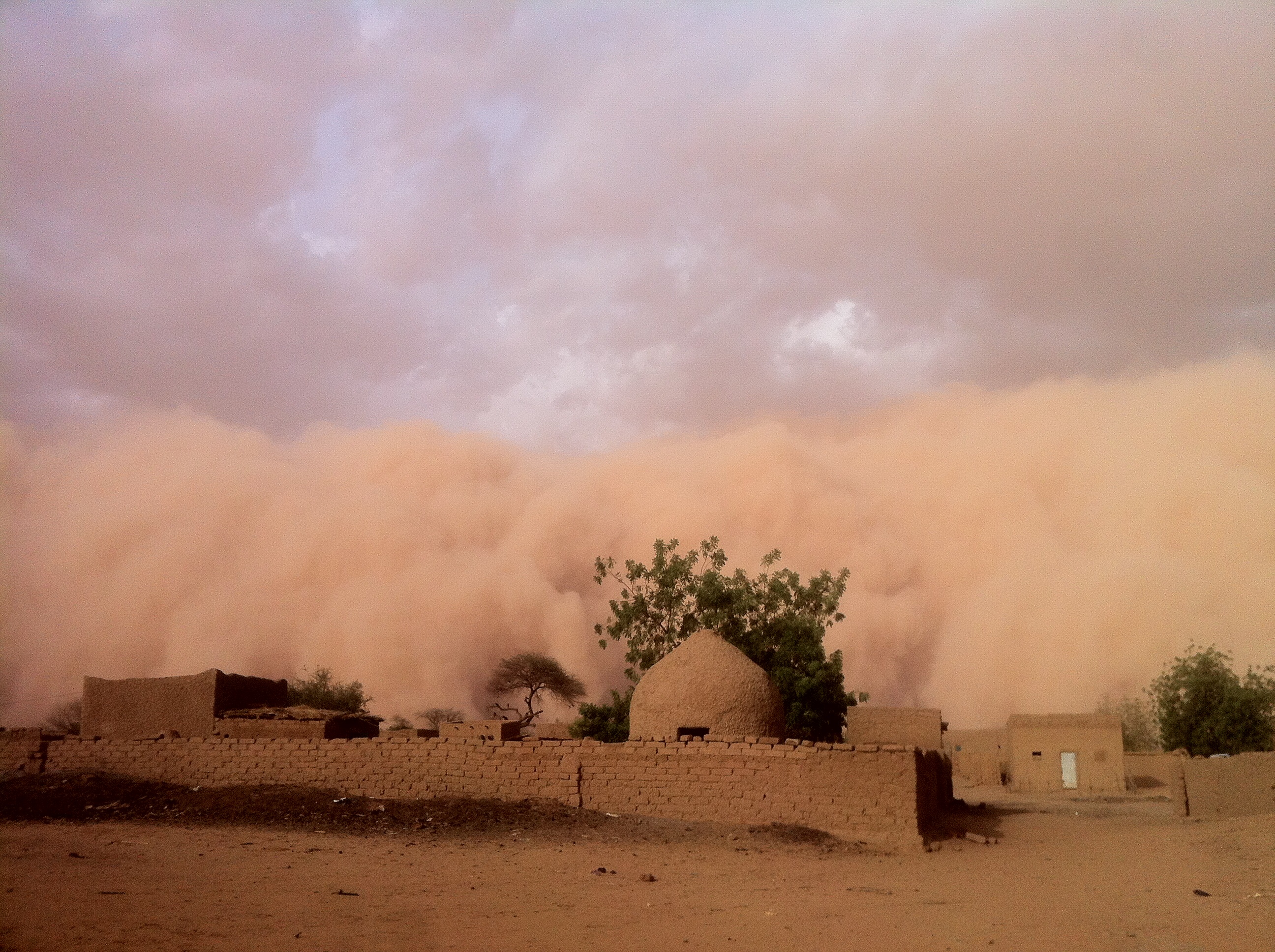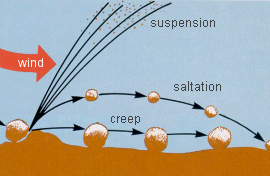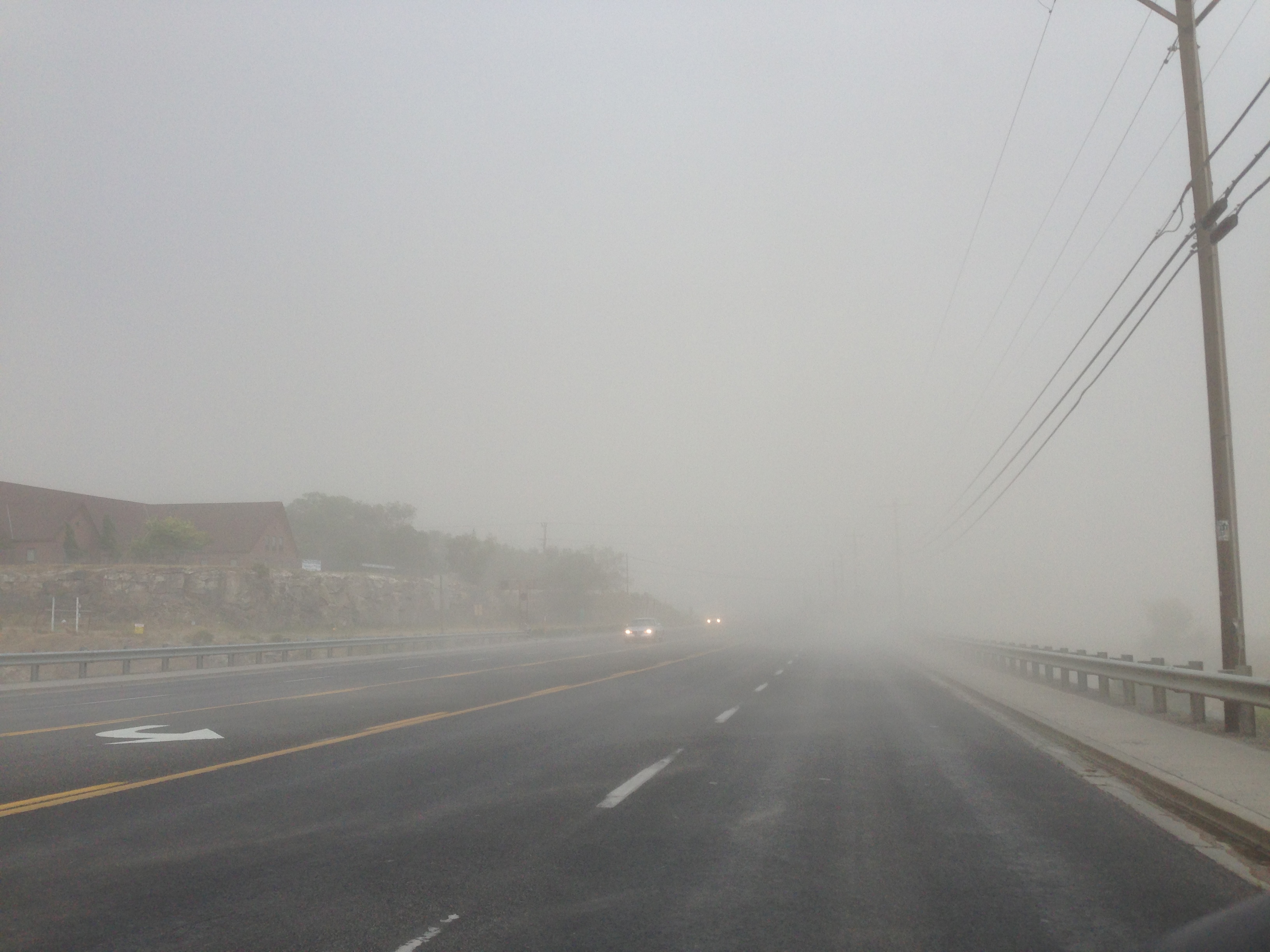
Credit: Jakeorin, via Wikimedia Commons
When a thunderstorm forms over the desert, it may not produce rain—but could form a deadly dust blizzard called a haboob.
When rain droplets condense within a thunderhead, they cool the air, which rushes toward Earth with the rain.
If this happens over a desert, the rain will often evaporate before reaching Earth. The evaporative cooling further chills the air, which falls faster.
Eventually the current of air strikes the ground, at high speed, and expands outward.
The blast often carries dust and sand into the air, to form a huge dust storm that advances in front of the thunderhead.
These were first studied in the Sahara, hence were given an Arabic name, haboob. But they form across arid regions of the U.S. as well.
Sand, dust and soil carried by a haboob can sandblast vehicles and buildings. Worse, haboobs often carry bacteria and viruses from the desert floor, causing respiratory problems and skin irritation for those exposed to them.
Even more dangerous, haboobs can suddenly drop visibility to zero. Highway pileups are common in these storms, and the dust can blind pilots and interfere with airplane engines.
If areas like the American West become drier, we could see more frequent haboobs.
If you’re caught in one, first cover your nose and mouth. If driving, honk your horn and pull far off the road. Then turn off all your lights so other cars don’t steer toward and hit you.
Background
Synopsis: Haboobs are best known from the Sahara and Arabian deserts, but they are also common in arid regions of the western United States. They happen when dry silt or sand ends up in the path of downbursts from an approaching thunderstorm system. They can quickly grow to heights of nearly a mile and may stretch tens of miles in length. These dangerous “black blizzards” suddenly block out sunlight as they race ahead of the storm at highway speeds. They also create respiratory hazards by carrying fine dust that may carry fungal spores.
- Haboobs are common to desert regions and areas on the periphery of deserts.
- They were first studied in Africa’s Sahel region, between the Sahara Desert and the African savanna, so they were given an Arabic name.

Haboob in the African Sahel.
Credit: Zangou, via Wikimedia Commons - Haboob means blasting or drifting in Arabic, originating from the Arabic word haab which means wind or blow.
- They were first studied in Africa’s Sahel region, between the Sahara Desert and the African savanna, so they were given an Arabic name.
- To make a dust storm, you just need dust and a strong wind.
- Dust from the Sahara regularly fertilizes the Amazon in Brazil through seasonal dust storms that blow across the Atlantic Ocean (ED-024 Dust in the Wind).
- But haboobs are a special type of dust storm.
- To make a haboob, the wind must be generated within a thunderstorm as a cold dense “outflow” downdraft that plunges earthward because of convection, then spreads out as it hits Earth’s surface.
- In arid regions, the fast-moving downdraft entrains dry sand and silt as it hits the parched desert surface, roiling them up into the air as the storm approaches.
- Deserts are full of loose grains of silt and sand.
- Dust is made up of dry, very fine-grained sediment particles and soil, including lightweight organic matter, like bacteria and fungi.
- If the desert gets wet, these particles cling together and are less likely to blow around, and plants may further stabilize the substrate.
- Droughts cause semiarid regions to dry out and lose vegetation in a process known as desertification, creating areas of dry dust.
- Human activity can cause desertification through animal grazing, clear cutting and farming practices that expose soil to the elements.
- Wind moving at just 9 mph (14.5 km/h) can shift dry dust and sand particles loose on the desert surface.
- The smallest particles are suspended in air, while larger particles roll (creep) along the surface.

This diagram shows the mechanics of loose particle movement in the presence of wind.
Credit: NASA, public domain, via Wikimedia Commons - Other particles bounce along the surface, disrupting other particles in a process called saltation, causing them to join the fray. As these particles hit each other, they acquire a negative charge, rendering the ground surface positive and creating a static electric field that helps boost additional particles into the air.
- The smallest particles are lifted higher into the air column, while larger particles tend to hug the ground.
- The smallest particles are suspended in air, while larger particles roll (creep) along the surface.
- When you think about arid and semiarid regions, thunderstorms may not be part of that visualization, but many of these regions have cyclical dry and rainy seasons.
- Thunderstorms are essential to haboob formation, even if evaporation means that they do not ultimately drop any rain.
- In Arizona, the rainy North American Monsoon season typically occurs from around June 15 to September 30, caused by a reversal in prevailing wind direction (ED-271 Monsoon Rains). Over a 10-year period, NASA recorded about 100 haboobs in Arizona.
- Haboobs also occur in Texas, New Mexico and Nevada and are less common in surrounding states.
- As cumulonimbus clouds move through arid regions during the rainy season, haboobs may form as they start to disperse.
- Rapidly rising air produces the central core of rain clouds, but once raindrops condense and begin to fall, cooler air moves downward with the rain and cools further as raindrops evaporate in the dry air.
- This denser air causes gravity-driven convection, accelerating the downward directed wind into sudden downdrafts that hit the ground below the storm at speeds of more than 50 mph (80.5 km/h) and race off along the ground surface as outflow boundaries or gust fronts.
- These gusts kick up walls of dust and sand that move ahead of the storm at about half the speed of the winds in the outflow boundary, around 30 mph (48 km/h). Rain may evaporate as virga before it can hit the ground, or it may rain through the dust to produce mud storms.
- Because they are generated by discrete downdraft events and tend to outrun the storm that generated them, haboobs only last a few minutes to a few hours.
- Haboobs can grow up to a mile (1.6 km) in height. They may start out under a single cumulonimbus cloud at about a mile (1.6 km) wide, but a line of thunderclouds can sometimes generate continuous dust walls tens of miles long.
- One of these “black blizzards” grew to 100 miles long and nearly a mile high as it roared through Phoenix, Arizona, at speeds of 50 to 60 miles per hour in July 2011, darkening the sky and creating hazards for residents.

A huge haboob engulfs Phoenix, Arizona, on July 5, 2011.
Credit: Alan Stark, via Wikimedia Commons
- One of these “black blizzards” grew to 100 miles long and nearly a mile high as it roared through Phoenix, Arizona, at speeds of 50 to 60 miles per hour in July 2011, darkening the sky and creating hazards for residents.
- Haboobs are hazardous.
- Inside a haboob visibility can be reduced, especially at ground level where it can approach zero in just two minutes. Because they form rapidly and are difficult to predict, they can pose visibility risks and collision danger to both ground and air traffic. Pileup highway collisions are common during these events.

A haboob reduces visibility dramatically on U.S. Route 30 in Twin Falls, Idaho, on July 4, 2013.
Credit: Famartin, via Wikimedia Commons - Sudden high winds tumble trees, damage houses, and cause power outages.
- Wind driven dust can sandblast vehicles and homes and jam machinery like air conditioners and jet engines.
- Inside a haboob visibility can be reduced, especially at ground level where it can approach zero in just two minutes. Because they form rapidly and are difficult to predict, they can pose visibility risks and collision danger to both ground and air traffic. Pileup highway collisions are common during these events.
- Airborne dust qualifies as a pollutant that causes breathing problems because of its tiny size (10 micrometers). It is a respiratory hazard because it can carry infectious bacteria, viruses and fungi.
- Haboobs are known to be the cause of “haboob lung syndrome” and “valley fever” from a soil fungus (Coccidioides) that becomes entrained in the wind and is inhaled, causing shortness of breath, exhaustion and skin irritation. For those with health challenges, it may be fatal.
- In 2014, a fungus carried by a haboob caused valley fever, which can be fatal in extreme cases but more often means months of shortness of breath, exhaustion and skin rashes.
- Dust bowl era dust storms (ED-156 Dust Bowl: Disaster Strikes) spread measles, influenza, and other infectious diseases, causing thousands of deaths.
- There are a few things you can do to protect yourself in the face of an oncoming haboob.
- If you are driving, pull safely off the roadway before the dust closes in on you and extinguish all your car lights and keep your foot off the brake pedal so oncoming traffic does not drive into you. If you must continue moving, keep your lights on and beep your horn to warn others of your movement, then move out of the traffic lanes and stop when possible.
- If you are outside, seek shelter and cover your face with a mask or cloth to prevent inhalation of the tiny particles and cover your eyes to avoid irritation.
- As drought, overgrazing, deforestation, and depletion of surface and ground water resources increases, more desertification and extreme weather is likely to result, so events like haboobs may become more common.

